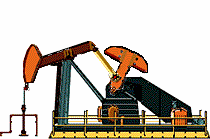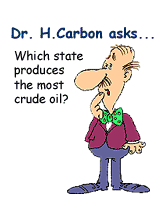 
OIL — Ever wonder what oil looks like underground, down deep, hundreds or thousands of feet below the surface, buried under millions of tons of rock and dirt?
If you could look down an oil well and see oil where Nature created it, you might be surprised. You wouldn't see a big underground lake, as a lot of people think. Oil doesn't exist in deep, black pools. In fact, an underground oil formation - called an "oil reservoir" - looks very much like any other rock formation. It looks a lot like...well, rock.
Oil exists underground as tiny droplets trapped inside the open spaces, called "pores," inside rocks. The "pores" and the oil droplets can be seen only through a microscope. The droplets cling to the rock, like drops of water cling to a window pane.
How do oil companies break these tiny droplets away from the rock thousands of feet underground? How does this oil move through the dense rock and into wells that take it to the surface? How do the tiny droplets combine into the billions of gallons of oil that the United States and the rest of the world use each day?
To find out...
|
 |
 |
 |

|